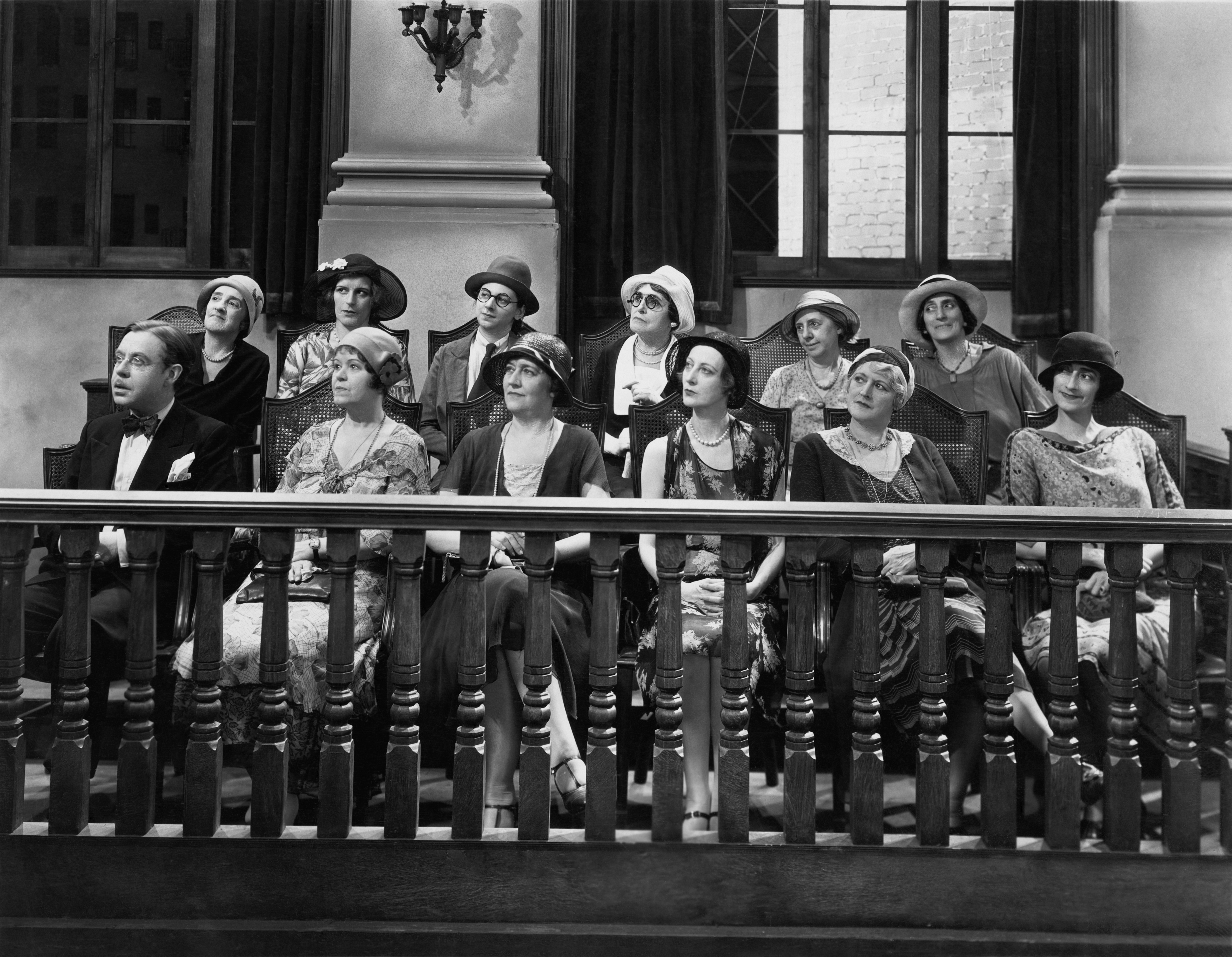“If we think trade secret law on avoided cost damages is too loose as it is written, then we should go back to Congress to make it work better for the industries it is designed to serve, rather than conjure a gloss on the existing statute using a ‘restatement of the common law.’”
“In suits at common law, where the value in controversy shall exceed twenty dollars, the right of trial by jury shall be preserved . . . .” — 7th Amendment to U.S. Constitution
 You always remember your first jury trial. Mine happened almost 50 years ago, and I still vividly recall sitting with the partner to work on the “instructions” that the judge would be giving. He explained to me that the jury would be told what the statutes said (this was a contract case), and they would be responsible for deciding the facts that determined their verdict. As it turned out, we didn’t win, and that was the end of it. Although an appeal was possible, overturning a jury verdict is very hard to do.
You always remember your first jury trial. Mine happened almost 50 years ago, and I still vividly recall sitting with the partner to work on the “instructions” that the judge would be giving. He explained to me that the jury would be told what the statutes said (this was a contract case), and they would be responsible for deciding the facts that determined their verdict. As it turned out, we didn’t win, and that was the end of it. Although an appeal was possible, overturning a jury verdict is very hard to do.
And that’s as it should be. Respect for the jury as an institution, coupled with a logical focus on efficiency, long ago – long before we coined the term “crowdsourcing” – led to rules that defer to the wisdom of the jury. If the trial judge made a serious error that likely affected the outcome, a new trial can be ordered. But only rarely do we allow judges to reverse what the jury did and give judgment to the other side. That would require scouring the record, going through all the exhibits and all the testimony, to conclude that there was “a complete absence of evidence supporting the verdict.” Judges are not allowed to substitute their assessment of credibility when they do this, but have to interpret all the evidence in a way that is most favorable to the jury’s decision. Only if they do that, and are still convinced that the facts are so “overwhelming” that no reasonable person could have come out as the jury did, can the trial judge (or an appeals court) reverse the result.
The Second Circuit in Syntel v. Trizetto
That’s why I was surprised to see the recent opinion in Syntel v. Trizetto, a trade secret case that made its way to the Second Circuit Court of Appeals following a jury trial in New York federal court in October 2020. Syntel, a software developer, had sued Trizetto under a contract for improving software tools used in the healthcare industry. Trizetto filed a counterclaim accusing Syntel of misusing its access to Trizetto secrets to go into competition with it.
Trizetto based its claim on the Defend Trade Secrets Act (DTSA), which since 2016 has allowed trade secret owners to sue in federal court. Before that time, claims for misappropriation mainly happened in state courts under the so-called Uniform Trade Secrets Act (UTSA). I say “so-called” because over the years since the UTSA was proposed as a model, individual states have tinkered with the language so much that Congress decided a federal law was needed to provide consistency. But one aspect of the DTSA and UTSA match perfectly: how damages are calculated.
Disgorgement of a Defendant’s Avoided Costs
Because the twin policies behind trade secret law, according to the U.S. Supreme Court, are the “maintenance of standards of commercial ethics and the encouragement of invention,” damage awards tend to be generous to ensure that the victim is fully compensated and that the perpetrator does not retain any benefit from the misappropriation. Specifically, a plaintiff is entitled to recover damages for its “actual loss” and an amount representing the defendant’s “unjust enrichment,” so long as there’s no double counting. For a lot of reasons, it’s often difficult to show actual loss, and so plaintiffs tend to rely more on “disgorgement” of the defendant’s benefit. And usually that benefit is calculated as the defendant’s “avoided costs” from not having to do its own research and experimentation to discover the secret on its own.
Trizetto in fact had evidence of actual loss, in the form of some business that Syntel was able to grab, amounting to $8.5 million. But the calculation of Syntel’s avoided costs, based on what it had cost Trizetto to develop the secret information in the first place, was almost $285 million. That was the number submitted to the jury, and it ruled for Trizetto and also awarded punitive damages because it found that Syntel’s misappropriation was “willful and malicious.” After the trial, Syntel challenged the verdict, but the trial judge, applying the traditional standard favoring jury verdicts, denied Syntel’s motion. (The jury had also awarded damages for copyright infringement, but that was not challenged).
Switching the Standard of Review
However, on appeal to the Second Circuit, the judgment was vacated. Applying the deferential standard of review, the court began by confirming that Trizetto had proven the existence of legitimate trade secrets, and that Syntel had no right under the contract to use that information in competition with Trizetto. But although it acknowledged that the “amount of recoverable damages is a question of fact,” it switched its analysis to “de novo” (i.e., fresh eyes) review on the “legal question” of whether it was proper “in this specific case” to allow recovery of avoided costs under the DTSA.
You would be excused for thinking that this was a pretty straightforward question. After all, the statute is expressed in the conjunctive: the plaintiff can recover its loss “and” any amount of unjust enrichment that is not already accounted for in the loss calculation. Indeed, at least two other circuit courts, applying identical language from the UTSA, had ruled that way: Epic Systems v. Tata Consultancy (Seventh Circuit) and PPG Industries v. Jiangsu (Third Circuit). Ultimately, the Second Circuit panel said it disagreed with those cases.
Misinterpreting the DTSA
Instead, the court adopted a false premise: that the DTSA provision on unjust enrichment is designed to provide compensation to victims “whose injuries are not adequately addressed by lost profits” by making “trade secret holders whole.” There is nothing in the text of the statute or in the history of its enactment that supports that assumption; instead, the obvious goal is simply to make sure that the thief doesn’t get to hold on to any benefit from the wrongful act. This twist of the statutory purpose provided the setup for wandering even further from the statute, to consider the Restatement (Third) of Unfair Competition, a publication of the American Law Institute which purports to describe the common law on a variety of subjects, including trade secrets. It is what lawyers call a “secondary reference,” in contrast to the statute itself, which is primary.
Turning to the Restatement for an understanding of the common law of trade secret damages, the court zeroed in on § 45(2), which suggests that, in addition to the basic approach of awarding the greater of plaintiff’s loss or defendant’s gain, a judge should engage in a “comparative appraisal of all the factors of the case,” including the “degree of certainty” with which the plaintiff has established its damages case, and “the relative adequacy to the plaintiff of other remedies.” We should pause here to emphasize that none of this is part of the UTSA or DTSA, but represents the consensus view of a largely self-selected group of scholars and practitioners about the state of the “common” (i.e., non-statutory) law. But the Second Circuit tried to link it together in passing with a footnote saying only that “these common law principles are consistent with the language and the structure of the DTSA.” Of course, “consistent with” means just that they are not obviously conflicting, not that the common law principles can be inferred from the language of the statute; they can’t be.
Requiring a ‘Comparative Appraisal’ of Remedies
Having given itself permission to review the question with zero deference to the verdict, the appellate court engaged in what it viewed as the “comparative appraisal” suggested by the Restatement. It focused its attention on the “adequacy to [Trizetto] of other remedies” and in particular the permanent injunction that the trial judge had entered, prohibiting Syntel from using or disclosing the trade secrets. Such remedies “work as a powerful tonic to reduce the harm a trade secret holder suffers beyond its lost business.” Indeed, if you focused only on avoided costs without the (undefined) “comparative appraisal,” the court said, you risk making “awards that are more punitive than compensatory.” So, let’s pause again briefly to observe that the court has by now conflated two separate statutory damage calculations by linking both of them to harm to the plaintiff; and it seems to have revealed its real underlying concern: that a $245 million damage award seems very excessive (and therefore “punitive”) against someone who’s already been enjoined from further use and in favor of someone who hasn’t actually lost much. (Indeed, the court offered, Trizetto’s software “is worth even more today than it was when the misappropriation occurred.”)
As you may be able to tell by now, this logical legerdemain by the Second Circuit has me pretty disappointed. Even more so because they try to have it both ways, by issuing a broad ruling that avoided cost unjust enrichment damages must somehow be tethered to proof of loss to the plaintiff, and by repeating (seven times by my count) the suggestion that its holding is limited to “the particular facts” of this case. It seems a disservice not only to the litigants, but also to the rest of us who care about this area of the law, to engage in such labyrinthian reasoning to attack an award that one believes is excessive in light of the injunction.
What Can Be Done to Resolve the Conflict?
If we think trade secret law on avoided cost damages is too loose as it is written, then we should go back to Congress to make it work better for the industries it is designed to serve, rather than conjure a gloss on the existing statute using a “restatement of the common law.” If we’re going to sharpen the point, we should take the opportunity to clarify and reinforce that harm to the victim is different than benefit to the defendant, and that “avoided cost” is not just about money, but about not having to take the risk that your own development effort will fail entirely. The “value” of a stolen trade secret to the misappropriator is at least in the knowledge that it works.
As an alternative to returning to Congress, perhaps there are ways to honestly interpret the existing law to help provide better guidance to juries. Sitting down to write instructions that cleanly separate issues of law and fact will help us prepare our trials and improve predictability of outcomes. As I learned a long time ago, juries will do the right thing if you give them the right information.
Image Source: Deposit Photos
Author: everett225
Image ID: 12286502

![[IPWatchdog Logo]](https://ipwatchdog.com/wp-content/themes/IPWatchdog%20-%202023/assets/images/temp/logo-small@2x.png)

![[Advertisement]](https://ipwatchdog.com/wp-content/uploads/2024/04/UnitedLex-May-2-2024-sidebar-700x500-1.jpg)
![[Advertisement]](https://ipwatchdog.com/wp-content/uploads/2024/04/Artificial-Intelligence-2024-REPLAY-sidebar-700x500-corrected.jpg)
![[Advertisement]](https://ipwatchdog.com/wp-content/uploads/2024/04/Patent-Litigation-Masters-2024-sidebar-700x500-1.jpg)

![[Advertisement]](https://ipwatchdog.com/wp-content/uploads/2021/12/WEBINAR-336-x-280-px.png)
![[Advertisement]](https://ipwatchdog.com/wp-content/uploads/2021/12/2021-Patent-Practice-on-Demand-recorded-Feb-2021-336-x-280.jpg)
![[Advertisement]](https://ipwatchdog.com/wp-content/uploads/2021/12/Ad-4-The-Invent-Patent-System™.png)






Join the Discussion
One comment so far.
Stewart Hoffer
October 3, 2023 02:10 pmWell written, James. I am enjoying your blog.